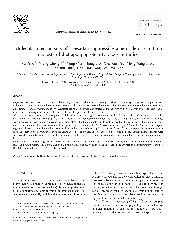摘要
Objective: Atherosclerosis is a chronic inflammatory disease in which the renin-angiotensin-aldosterone system plays an important role. Evidence indicate that the angiotensin type 1 receptor blockers can suppress atherogenesis, but the exact mechanisms have not been fully elucidated. The study was undertaken to investigate the potential effects and molecular mechanisms of an angiotensin type 1 receptor blocker irbesartan on atherogenesis in high cholesterol-diet apolipoprotein E knock-out mice.
Methods and results: Adult male apolipoprotein E knock-out mice were given normal diet or high cholesterol-diet and randomized to receive no treatment or irbesartan 10 mg kg(-1) d(-1) for 12 weeks. The apolipoprotein E knock-out mice with high cholesterol-diet were associated with a marked increase in atherosclerotic lesion area, plasma lipid and angiotensin II levels, as well as the expressions of angiotensin type 1 receptor in the aorta. High cholesterol-diet feeding increases the activity of NADPH oxidase subunits (p47(phox) and Rac), extracellular signal-regulated kinase 1/2, janus kinase 2, signal transducer and activator of transcription 3, nuclear factor-kappa B and the expression of tumor necrosis factor-alpha, interleukin 6, monocyte chemoattactant protein-1 and vascular cell adhesion molecule-1 in the aortas. These changes were suppressed in mice that were treated with irbesartan 10 mg kg(-1) d(-1), with no significant change in systolic blood pressure and plasma lipid levels.
Conclusions: The results suggest that irbesartan can attenuate atherosclerosis, and this effect is partly related to the inhibition of oxidative stress and inflammatory signal transduction pathways which eventually leads to the decrease in the expression of inflammatory cytokines.
- 出版日期2010-3-4
- 单位华中科技大学
